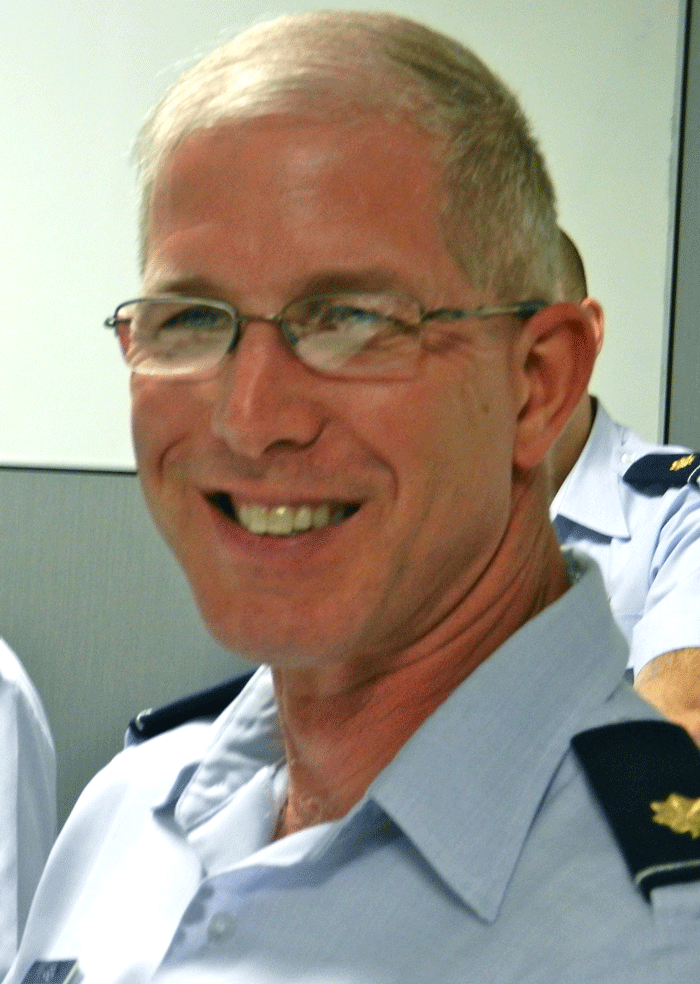The Aeromedical Evacuation Piece
06/26/2011 – In the roundtable at the Tanker Airlift Control Center (TACC) , Major Charles Marek led off the discussion of the aeromedical evacuation operations of the TACC. The command focuses upon inter-theater lift while the COCOMs focus on intra-theater support. A key strategic development has been a shift from relying upon specialized support aircraft to providing modules throughout the fleet to provide for aeromedical support. This significantly changes the approach to such operations.
SLD: We were discussing earlier the role of modules inserted into lifters as opposed to the use of specialized aeromedical aircraft. Where are the modules kept?
Marek: They are stored in our various strategic hubs. For the C-17s we have things like the litter stanchion augmentation sets and those help give us more litter stanchions if we have patients that are critically injured. For the KC-135s, we have patient support pallets, which have both seats and litter stanchions built on them. They just clip right into the aircraft. Alternatively, we have some that are just seats or some that are just litters.

Major Marek during the SLD interview April 2011
Credit: SLD 2011
SLD: And these are stored at major air bases?
Marek: Correct, at hub locations. We can then fly them to the air base from which we are going to fly the patient.
SLD: There has been a significant increase in the survivability of wounded servicemen. Presumably, this system is part of the reason why.
Marek: It is due to two factors. First, it is due to the way we can get to the patient within the first hour of injury. The Army and the Marines use their Medevac rotary wings to do most of that. They get to the patient and get them to the hospitals that are located in different strategic locations throughout the theater. Second, it is due to our ability to move the patient from there to longer, more definitive care, say to Ramstein or back in the states. If we get a call that we have a critical or an urgent patient that needs to be moved we’ll work with the DO/DDOs, BSD, TDD as well as the “senior” on the floor to select the best mission that will meet the request and cause the least glass to be broken in the system. It could be a mission that’s already in execution and we could be kicking off cargo. But our first action is to find a mission that is going back empty or a minimum amount of cargo so that we can still get that cargo to where it needs to go. In addition, we would also work with the tanker guys if the mission required an aerial refueling to get that patient back (depending on the actual distance).

U.S. Air Force Master Sgt. Zachary Johnson, 451st Expeditionary Aeromedical Evacuation Flight, aeromedical technician, cares for a patient during an Aeromedical Evacuation mission to transport patients from Kandahar Air Field to Bagram Air Base July 19
SLD: When did this system operating now actually begin to come together?
Marek: Pretty much in the last 5-10 years. The main shift has been from using dedicated aircraft to AE delivered by any opportune aircraft.
SLD: What were the dedicated aircraft?
Marek: The C-9 Nightingale (which was the military version of the DC-9 airliner). And the C-141 was also one, as well.
SLD: What’s the biggest challenge to making this all work from your point of view?
Marek: It is not knowing the location of our tasking. We don’t know who’s going to get injured and when. And then there is the challenge of trying to get the technology into the back of the aircraft, such as radiological technology (to do radiographical pictures) and sending that information back to the facility to give them a heads up on what’s coming their way, as well as providing electronic health records.
The progress has been significant. The average time to return a patient stateside was 45 days in Vietnam. In Desert Storm, it was ten days to get back to the U.S. Today, we’re down to three. Col. Mintzlaff: And the equipment they carry is pretty incredible too. If you go to the Pacific, it’s really a good quality of life for U.S. military families. For example, in the case of neonatal, you see the equipment come up and they can transport somebody from incredible distances, whether you’re going from Kadena to Hawaii or back to the states with an infant baby.
Sometimes we overlook those normal things because we focus so much on getting wounded warriors home quickly. But we’re moving neonatal babies in the middle of nowhere with an airplane setup that will take just that baby and mom to a hospital. And it’s not just one aircraft. It could be four or five different aircraft. One aircraft could be coming out of Balboa Medical Center with personnel to help take care of that baby. And the equipment’s coming from another location, so another aircraft might be bringing that to get it all married up into one location to pick up that neonate. We do that for anyone, not just neonates. We do it for coalition partners as well.

